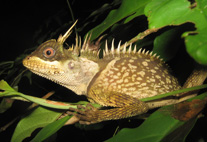Abstract
Two new species of intertidal ghost shrimp are described from coastal Central American habitats of the eastern Pacific Ocean, bringing the total known membership of the genus to 18 species. Lepidophthalmus natesi sp. nov. from Colombia and Nicaragua shares with Lepidophthalmus panamensis sp. nov. from Colombia and Panama the lack of extensive ventral pleomere armor, especially in lacking a median ventral sclerite on the second pleomere. The absence of this plate is also a character of the eastern Pacific species L. rafai Felder & Manning, 1998, but the two new species differ from it in telson shape. Ventral armor including this plate is present in Lepidophthalmus bocourti (A. Milne-Edwards, 1870) and L. eiseni Holmes, 1904 which occur sympatrically with L. natesi sp. nov. in eastern Pacific tropical estuaries. As also known for at least L. bocourti, L. natesi sp. nov. invades and densely colonizes penaeid shrimp aquaculture ponds in regional estuarine settings. Individuals of L. panamensis sp. nov. are of smaller body size but also may be densely concentrated, especially in clayey substrates including those adjacent to intertidal rocks. Despite their similarities in the pleon and shape of the telson, the species can be readily separated by dentition of the cheliped fingers, relative length of the minor chela fingers, the second pleopod appendix of mature males, and egg size. The large eggs of L. panamensis sp. nov. suggest extremely abbreviated development. Characteristic coloration is described for both new species.

